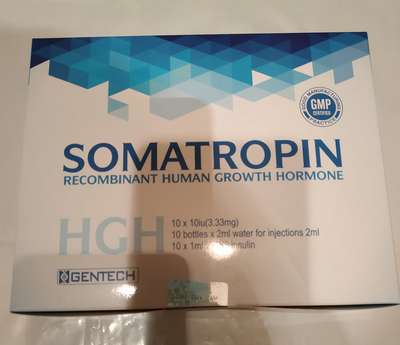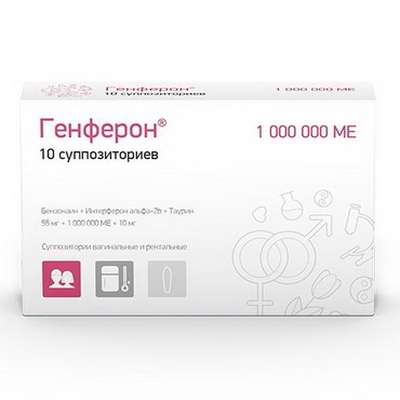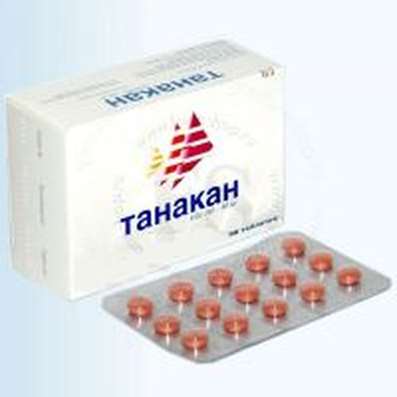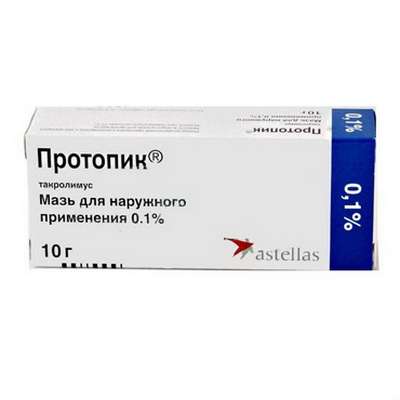Instruction for use: Iloprost
I want this, give me price
Latin name of the substance Iloprost
Iloprostum (genus. Iloprosti)
Chemical name
5- [Hexahydro-5-hydroxy-4- (3-hydroxy-4-methyl-1-octen-6-ynyl) -2 (1H) -pentenylenidene] pentanoic acid
Gross formula
C22H32O4
Pharmacological group of substance Iloprost
Prostaglandins, thromboxanes, leukotrienes and their antagonists
CAS Code
78919-13-8
Application in pregnancy and lactation
The action category for fetus by FDA is C.
Model clinical-pharmacological article 1
Pharmacotherapy. Antiaggregant agent, analog prostacyclin. Suppress aggregation, adhesion and activation of platelets; Causes dilation of arterioles and venules, reduces the increased vascular permeability, activates fibrinolysis, suppresses adhesion and migration of leukocytes after endothelial damage, reduces the formation of free oxygen radicals.
Pharmacokinetics. After intravenous infusion, Css is reached after 10-15 minutes (the time of reaching linearly depends on the speed of infusion). Cmax at infusion rate of 3 ng / kg / min - 135 ± 24 pg / ml. After the end of infusion, plasma concentration decreases rapidly (due to high metabolic rate). After 2 hours after stopping the infusion, the drug concentration is less than 10% of Css. The association with albumin plasma is 60%. Metabolic clearance is 20 ± 5 ml / kg / min. T1 / 2 in the final phase of the distribution - 1/2 h. Metabolized mainly by beta oxidation of the carboxyl side chain and the formation of the basic pharmacologically inactive metabolite of tetranoriloprost. It is excreted mainly by the kidneys (80% - in the form of tetranoriloprost and four conjugated forms - diastereoisomers), 20% - with bile. Elimination of metabolites from plasma and urine has a two-phase character: T1 / 2 from plasma to the first phase - about 2 hours, to the second phase - about 5 hours, and for urine - 2 and 18 hours, respectively. Pharmacokinetic parameters do not depend on age and sex . With cirrhosis of the liver and renal failure requiring dialysis, the clearance of the drug decreases by 2-4 times.
Indication. Obliterating thromboangiitis (in late stages with critical limb ischemia in cases of absence of indications for revascularization); Obliterating endarteritis (severe forms, especially in cases of risk of amputation and with the impossibility of vascular surgery or angioplasty); Raynaud's syndrome (in the late stages leading to disability, which cannot be controlled by other drugs).
Contraindications. Hypersensitivity, pathological conditions with an increased risk of bleeding (including gastric ulcer or duodenal ulcer in the acute stage, hemorrhagic stroke), severe ischemic heart disease (unstable angina, myocardial infarction during the last 6 months); Acute or chronic heart failure II-IV, severe arrhythmias, pregnancy, lactation.
Dosing. IV, in the form of infusions, daily in the form of a 6-hour infusion into the peripheral vein or a catheter installed in the central vein. The rate of administration (dose) depends on the individual tolerability and is 0.5-2 ng / kg / min.
During the first 2-3 days, individual tolerability of the drug is determined under the control of heart rate and blood pressure (should be determined at the start of infusion and after each dose increase): treatment starts at a rate of 0.5 ng / kg / min for 30 min, then dose stepwise Increase by 0.5 ng / kg / min every 30 minutes. The exact infusion rate is calculated based on their body weight and the maximum tolerated dose, within the range of 0.5-2 ng / kg / min.
Determination of the infusion rate (ml / h) using an infusion pump (for example Infusomata): the contents of the ampoule are dissolved in sterile 0.9% NaCl solution or 5% dextrose solution and the final volume of the solution is adjusted for the contents of the ampoule (2.5 ml) 50 μg - Up to 250 ml, for the ampoule (1 ml) 20 μg - up to 100 ml. A solution is obtained at a concentration of 0.2 μg / ml, the infusion rate is determined according to the dose and body weight (within the range of 0.5-2 ng / kg / min): at a body weight of 40 kg and a dose of 0.5 Ng / kg / min infusion rate - 6 ml / h, 1 ng / kg / min - 12 ml / h, 1.5 ng / ml / min - 18 ml / h, 2 ng / ml / min - 24 ml / h ; With a body weight of 50 kg and a dose of 0.5 ng / kg / min - 7.5 ml / h, 1 ng / kg / min - 15 ml / h, 1.5 ng / kg / min - 22.5 ml / h , 2 ng / kg / min - 30 ml / h; With a body weight of 60 kg and a dose of 0.5 ng / kg / min - 9 ml / h, 1 ng / kg / min - 18 ml / h, 1.5 ng / kg / min - 27 ml / h, 2 ng / Kg / min - 36 ml / h; With a body weight of 70 kg and a dose of 0.5 ng / kg / min - 10.5 ml / h, 1 ng / kg / min - 21 ml / h, 1.5 ng / kg / min - 31.5 ml / h , 2 ng / kg / min - 42 ml / h; With a body weight of 80 kg and a dose of 0.5 ng / kg / min - 12 ml / h, 1 ng / kg / min - 24 ml / h, 1.5 ng / kg / min - 36 ml / h, 2 ng / Kg / min - 48 ml / h; With a body weight of 90 kg and a dose of 0.5 ng / kg / min - 13.5 ml / h, 1 ng / kg / min - 27 ml / h, 1.5 ng / kg / min - 40.5 ml / h , 2 ng / kg / min - 54 ml / h; With a body weight of 100 kg and a dose of 0.5 ng / kg / min - 16 ml / h, 1 ng / kg / min - 30 ml / h, 1.5 ng / kg / min 45 ml / h, 2 ng / kg / Min - 60 ml / h; With a body weight of 110 kg and a dose of 0.5 ng / kg / min - 16.5 ml / h, 1 ng / kg / min - 33 ml / h, 1.5 ng / kg / min - 49.5 ml / h , 2 ng / kg / min - 66 ml / h. Determination of the infusion rate (ml / h) using an automatic syringe (eg Perfusor): the contents of the ampoules are diluted in sterile 0.9% NaCl solution or 5% dextrose solution and the final volume of the solution is adjusted for the contents of the ampoule (2.5 ml) 50 μg - Up to 25 ml, for the ampoule (1 ml) 20 μg - up to 10 ml. The solution is obtained at a concentration of 2 μg / ml, the infusion rate is determined according to the dose and body weight (within the range 0.5-2.0 ng / kg / min): at a body weight of 40 kg and a dose of 0.5 Ng / kg / min infusion rate - 0.6 ml / h, 1 ng / kg / min - 1.2 ml / h, 1.5 ng / kg / min - 1.8 ml / h, 2 ng / kg / Min - 2.4 ml / h; With a body weight of 50 kg and a dose of 0.5 ng / kg / min - 0.75 ml / h, 1.5 ng / kg / min - 1.5 ml / h, 1.5 ng / kg / min - 2, 25 ml / h, 2 ng / kg / min - 3 ml / h; With a body weight of 60 kg and a dose of 0.5 ng / kg / min - 0.9 ml / h, 1 ng / kg / min - 1.8 ml / h, 1.5 ng / kg / min - 2.7 ml / H, 2 ng / kg / min - 3.6 ml / h; With a body weight of 70 kg and a dose of 0.5 ng / kg / min - 1.05 ml / min, 1 ng / kg / min - 2.1 ml / h, 1.5 ng / kg / min - 3.15 ml / H, 2 ng / kg / min - 4.2 ml / h; With a body weight of 80 kg and a dose of 0.5 ng / kg / min - 1.2 ml / h, 1 ng / kg / min - 2.4 ml / h, 1.5 ng / kg / min - 3.6 ml / H, 2 ng / kg / min - 4.8 ml / h; With a body weight of 90 kg and a dose of 0.5 ng / kg / min - 1.35 ml / h, 1 ng / kg / min - 2.7 ml / h, 1.5 ng / kg / min - 4.05 ml / H, 2 ng / kg / min - 5.4 ml / h; With a body weight of 100 kg and a dose of 0.5 ng / kg / min - 1.5 ml / h, 1 ng / kg / min - 3 ml / h, 1.5 ng / kg / min - 1.5 ml / h , 2 ng / kg / min - 6 ml / h; With a body weight of 110 kg and a dose of 0.5 ng / kg / min - 1.65 ml / h, 1 ng / kg / min - 3.3 ml / h, 1.5 ng / kg / min - 4.95 ml / H, 2 ng / kg / min - 6.6 ml / h.
Duration of treatment - up to 4 weeks. In patients with Reynaud's syndrome, short-term treatment courses are often short enough to achieve a short remission (several weeks) - 3-5 days.
In the event of such side effects as headache, nausea or a decrease in blood pressure, the infusion rate should be reduced to the maximum tolerable. With the development of severe side effects, infusion should be interrupted. Treatment is usually resumed after 4 weeks at doses, which the patient well tolerated in the first 2-3 days of the previous course of treatment.
With renal failure requiring dialysis, and with cirrhosis, the recommended dose is reduced by a factor of 2.
Side effect. From the nervous system and sensory organs: often (more than 1%, but less than 10%) - dizziness, headache, paresthesia, hyperesthesia, ringing in the ears, anxiety, agitation, inhibition, apathy, drowsiness; Less often (more than 0.1% but less than 1%) - tremor, cerebrovascular disorders, depression, hallucinations, migraine, fainting, prolonged loss of consciousness, impaired clear vision, irritation and pain in the eyes; Rarely (more than 0.01%, but less than 0.1%) - vestibular disorders; Frequency is unknown - confusion.
On the part of the CVS: often (more than 1%, but less than 10%) - lowering blood pressure, bradycardia, flushing of blood to the skin and a feeling of heat; Less often (more than 0.1%, but less than 1%) - arrhythmia (including extrasystole), myocardial ischemia, myocardial infarction, deep vein thrombosis, pulmonary embolism; Frequency unknown - increased blood pressure, tachycardia; In single cases (in patients with advanced age with severe atherosclerosis) - pulmonary edema.
On the part of the respiratory system: less often (more than 0.1%, but less than 1%) - bronchial asthma; Rarely (more than 0.01%, but less than 0.1%) - cough; In isolated cases (in patients with advanced age with severe atherosclerosis) - heart failure.
On the part of the digestive system: more often (more than 10%) - nausea, vomiting; Often (more than 1%, but less than 10%) - anorexia, diarrhea, discomfort in the abdomen, abdominal pain; Less often (more than 0.1%, but less than 1%) - dry mouth, taste change, tenesmus, constipation, belching, dysphagia, diarrhea, melena, rectal bleeding, jaundice.
On the part of the musculoskeletal system: often (more than 1%, but less than 10%) - pain in the chewing muscles, trismus, myalgia, arthralgia, muscle weakness; Less often (more than 0.1%, but less than 1%) - tetany, convulsive muscle twitching, hypertonia.
From the side of the urinary system: pain in the lower back, renal colic, change in the cellular composition of urine, dysuria.
Local reactions: often (more than 1%, but less than 10%) - skin hyperemia, pain, phlebitis at the injection site.
Other: more often (more than 10%) - sweating; Often (more than 1%, but less than 10%) - local pain, generalized pain, hyperthermia, skin itching, fatigue, thirst; Frequency is unknown - allergic reactions.
Overdose. Symptoms: severe blood flow to the face and severe headache, pain in the legs and back, sudden pallor, torrential perspiration, nausea, vomiting, abdominal pain, diarrhea, decreased or increased blood pressure, bradycardia or tachycardia.
Treatment: cessation of infusion, symptomatic therapy; The specific antidote is unknown.
Interaction. In the experiment, increases the antihypertensive effect of beta-adrenoblockers, BCC, vasodilators, ACE inhibitors (in clinical studies on volunteers, the data are not confirmed). If the blood pressure is too low, the dose of the drug should be reduced.
SCS in the experiment strengthens the vasodilator effect of iloprost, without altering the nature of the antiplatelet effect (the clinical effect is not revealed).
Heparin, anticoagulants of indirect action (coumarin derivatives), theoretically may increase the risk of bleeding (the drug infusion should be discontinued).
Antiaggregant effect is enhanced by other inhibitors of platelet aggregation (ASA, other NSAIDs, phosphodiesterase inhibitors, nitrates and molsidomine).
Pharmaceutically incompatible with other drugs.
Special instructions. The drug should be used only in conditions of careful monitoring monitoring in hospitals or outpatient facilities that have appropriate capabilities.
Before starting treatment, women should be excluded from pregnancy.
The solution for infusion should be prepared daily ex tempore to ensure its sterility.
Avoid taking the drug inside and its contact with mucous membranes and skin (can lead to a long and painless erythema). If the product gets on any part of the skin, immediately wash it with a large amount of water or 0.9% NaCl solution.
Do not postpone surgery to patients who need emergency amputation of the leg (for example, with an infected gas gangrene).
Patients should be strongly advised to quit smoking.
During therapy in patients with arterial hypotension, measures should be taken against further reduction of blood pressure. Patients with severe heart disease should be under close monitoring supervision.
After the termination of the course of treatment, one should take into account the possibility of developing orthostatic hypotension when the patient passes from a horizontal position to a vertical position.
Accidental administration of undiluted drug solution in the surrounding tissues can lead to their damage.
Constant infusion over several days is not recommended because of the possibility of developing tachyphylaxis, manifested in a weakened effect on platelets and the possibility of a "rebound syndrome" appearing in an increase in the propensity to aggregate platelets at the end of the course of therapy (reports of clinical complications associated with these Phenomena, are absent).
Do not administer to women during pregnancy and lactation (efficacy and safety not established).

 Cart
Cart





